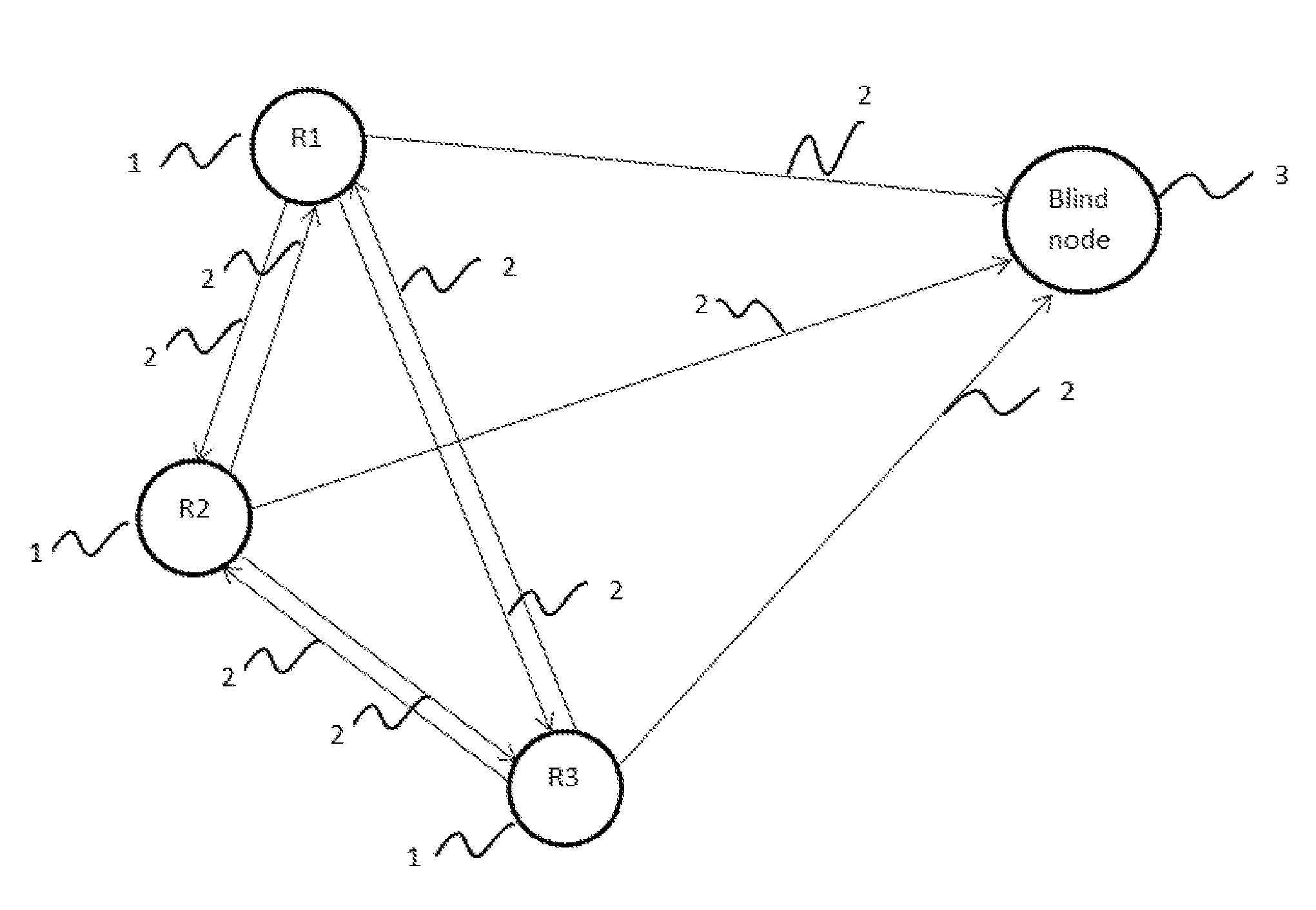System And Method For Distributed And Dynamic Location Identification Of Mobile Devices
a mobile device and dynamic location technology, applied in the field of distributed and dynamic location identification of mobile devices, to achieve the effect of good estimation of the path loss exponen
- Summary
- Abstract
- Description
- Claims
- Application Information
AI Technical Summary
Benefits of technology
Problems solved by technology
Method used
Image
Examples
example 1
Worst Case Performance
[0039]In the preferred embodiment of the present invention a simple test scenario of three reference nodes (1) and one blind node (3) was simulated under a number of practical circumstances, wherein such scenario have a blind node 3 located at coordinates (25,25) and three reference nodes (1) located at coordinates (30,0), (5,50) and (50,35) respectively. The actual path loss exponent is 3, the transmit power is of 18 dBm and the standard deviation of the random variable representing the variation in the path loss was tested for 2 dB, 4 dB and 6 dB representing quasi-static, dynamic and very dynamic environments respectively. The simulation was run for 500 trials. That is, each of said reference nodes (1) should receive a total of 500 reference beacons; 250 reference beaconsfrom each of other two reference nodes. When using the worst case estimation of N=1 to estimate said path loss exponent at each said reference node (1), the test showed that all nodeschange ...
example 2
Practical Case Performance
[0040]In the preferred embodiment of the present invention a simple test scenario of three reference nodes (1) and one blind node (3) was simulated under a number of practical circumstances, wherein such scenario have a blind node 3 located at coordinates (25,25) and three reference nodes (1) located at coordinates (30,0), (5,50) and (50,35) respectively. The actual path loss exponent is 3, the transmit power is of 18 dBm and the standard deviation of the random variable representing the variation in the path loss was tested for 2 dB, 4 dB and 6 dB representing quasi-static, dynamic and very dynamic environments respectively. The simulation was run for 500 trials. That is, each of said reference nodes (1) should receive a total of 500 reference nodes; 250 reference nodes from each of other two reference nodes. In this example the reference node (1) estimates said path loss exponent by calculating the mean of the last ten received reference nodes. This value...
PUM
 Login to View More
Login to View More Abstract
Description
Claims
Application Information
 Login to View More
Login to View More - R&D
- Intellectual Property
- Life Sciences
- Materials
- Tech Scout
- Unparalleled Data Quality
- Higher Quality Content
- 60% Fewer Hallucinations
Browse by: Latest US Patents, China's latest patents, Technical Efficacy Thesaurus, Application Domain, Technology Topic, Popular Technical Reports.
© 2025 PatSnap. All rights reserved.Legal|Privacy policy|Modern Slavery Act Transparency Statement|Sitemap|About US| Contact US: help@patsnap.com


